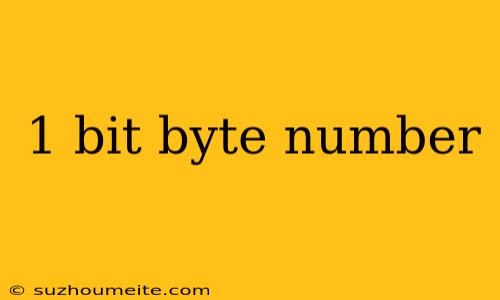1 Bit, Byte, and Number: Understanding the Basics of Computer Data
What is a Bit?
In the world of computers, a bit is the smallest unit of information. It is a single binary digit that can have only two values: 0 or 1. Bits are the building blocks of all digital information, and they are used to represent data, instructions, and addresses in a computer's memory.
What is a Byte?
A byte is a group of 8 bits that are used together to represent a single character, number, or other type of data. Bytes are the fundamental units of measurement for computer memory, and they are used to express the size of files, storage devices, and data transfers. One byte can represent 256 different values, ranging from 0 to 255.
What is a Number in Computer Science?
In computer science, a number can be a variety of things, including:
- An integer, which is a whole number, either positive, negative, or zero.
- A floating-point number, which is a number with a fractional part.
- A complex number, which is a number with real and imaginary parts.
Numbers are used to represent a wide range of data, including:
- Counters and indices
- Measurements and quantities
- Coordinates and positions
- Identities and identifiers
Conversion between Bits, Bytes, and Numbers
Computers use a system of binary arithmetic to perform calculations and conversions between bits, bytes, and numbers. Here are some examples:
- Bit to Byte: 8 bits = 1 byte
- Byte to Number: 1 byte can represent 256 different values (0-255)
- Number to Bit: A 32-bit integer can be represented as a sequence of 32 bits (0s and 1s)
In conclusion, understanding the basics of bits, bytes, and numbers is essential for working with computers and programming. By grasping these fundamental concepts, you'll be better equipped to navigate the world of computer science and programming.
